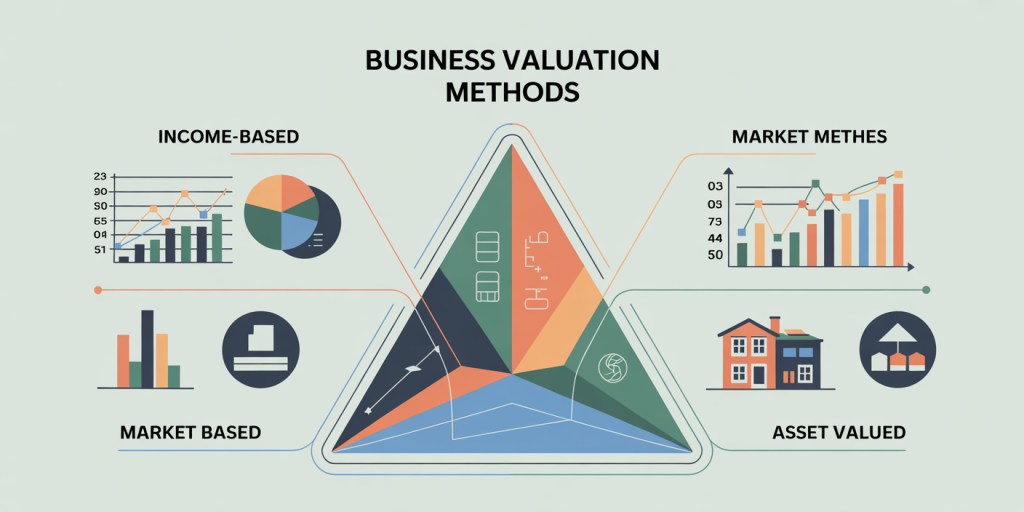Understanding the true value of your business is essential for making informed decisions regarding funding, selling, or expanding your company. Business valuation is an analytical process that estimates the economic worth of an owner’s interest in a business. Whether you are an entrepreneur preparing for an acquisition, a startup seeking investment, or a mature company planning an exit strategy, accurately calculating business valuation enables you to negotiate effectively and optimize your financial outcomes.
Estimating business value is not a one-size-fits-all exercise, as it depends on various factors such as industry norms, company size, profitability, and market conditions. Different valuation methods yield different outcomes, requiring business owners to understand the approaches and how they apply to their unique circumstances. This article delves into practical techniques and essential considerations for calculating your business’s valuation with clarity and precision.
Key Factors Influencing Business Valuation
Before diving into specific valuation methods, it’s important to recognize the key variables affecting a business’s worth. These variables provide the foundational context and help tailor valuation methods to fit different kinds of enterprises.
Profitability is a leading determinant in valuation. Businesses with strong profit margins typically attract higher valuations than those struggling to generate returns. For instance, according to a 2023 survey by BizBuySell, small businesses with an EBITDA (earnings before interest, taxes, depreciation, and amortization) margin exceeding 20% can see valuation multiples between 4x to 6x EBITDA. On the other hand, companies with slimmer margins often see multiples closer to 2x or 3x.
Another critical factor is growth potential. Investors and buyers attach premiums to firms demonstrating consistent revenue growth or operating in high-growth sectors like technology or healthcare. Historical financials illustrate past performance but need to be complemented by projections and market analyses for an accurate picture of future value. Additionally, intangible assets such as brand reputation, intellectual property, and customer loyalty impact valuation but can be more complex to quantify.

Furthermore, business size and industry standards significantly influence the method chosen for valuation. For example, tech startups may be valued primarily on revenue multiples, whereas manufacturing firms rely more on asset valuation. Location, market competition, and company age also play roles.
Common Business Valuation Methods
There are several established methods for calculating business valuation, each with strengths and applicability depending on the business profile and purpose of the valuation.
Income-Based Valuation
The income approach estimates a business’s value based on its ability to generate future income. The most common technique here is the Discounted Cash Flow (DCF) analysis, which involves forecasting cash flows over a certain period and discounting them to present value using a discount rate that reflects business risk.
For example, consider a small e-commerce company projecting free cash flow of $200,000 annually for the next five years. Using a discount rate of 12%, the present value of those cash flows can be calculated. Add the terminal value representing cash flow beyond Year 5 and sum the present values for total valuation. This method suits companies with predictable cash flows and detailed financial projections.

Market-Based Valuation
Market-based valuation analyzes comparable companies or recent sales of similar businesses to estimate value. Multiples such as price-to-earnings (P/E), price-to-sales (P/S), or EV/EBITDA ratios are used to benchmark your company.
For example, a software firm may be valued based on the median EV/EBITDA multiple in the software industry, which, according to Damodaran 2023 data, averages around 16x. If your business’s EBITDA is $1 million, a rough valuation using this multiple would be $16 million.
The advantage of market-based methods lies in their simplicity and grounding in real market transactions. However, accurate comparables must be identified, considering size, location, growth rate, and risk profiles.
Asset-Based Valuation
The asset approach involves calculating the net asset value of a business by subtracting total liabilities from total assets. This is straightforward for asset-heavy businesses like manufacturing.
For instance, a company may hold equipment and property valued at $5 million, inventory worth $500,000, and cash of $300,000, with liabilities amounting to $3 million. Its net asset value would be:
| Description | Value |
|---|---|
| Total Assets | $5,800,000 |
| Total Liabilities | $3,000,000 |
| Net Asset Value | $2,800,000 |
This method is less relevant for service businesses or those with substantial intangible assets.
Other Valuation Considerations
Some businesses warrant hybrid or alternative approaches. For example, startups often use the Venture Capital method, which estimates valuation based on projected exit value discounted for risk and investment timeline. Another popular model is the Rule of Thumb approach, which applies industry-specific formulas such as multiples of monthly revenue for freelancers or agencies.
Practical Steps to Calculate Your Business’s Valuation
Applying valuation methods involves several key steps to ensure accuracy and transparency. First, gather comprehensive financial documents including profit and loss statements, balance sheets, and cash flow statements for at least the past three years.
Next, clean up the financial data by removing non-recurring expenses or income that may distort actual profit levels. For example, a one-time legal settlement expense should be excluded from ongoing business costs, so normalization of earnings is essential.
Once reliable financials are in place, select the most appropriate valuation method based on your business attributes and valuation goal. Small retail businesses may lean on asset valuations, while fast-growing tech startups benefit from income or market-based methods.
Calculate valuations using chosen formulas or software tools to create multiple scenarios—for instance, using both DCF and market multiples to cross-check values. It’s good practice to write clear summaries of assumptions, discount rates, expected growth rates, and market comparison sources.
Finally, consult industry experts or business brokers to validate your valuation approach and results. Third-party input helps improve credibility when negotiating with investors or buyers.
Real-World Valuation Examples
To illustrate how valuation methods vary, consider two different companies for sale: Company A: A boutique coffee roaster generating $1 million in annual EBITDA with steady 10% growth. Company B: A small manufacturing outfit with $500,000 EBITDA and significant tangible assets worth $3 million after liabilities.
| Valuation Method | Company A Value | Company B Value |
|---|---|---|
| Income-Based (6x EBITDA) | $6 million | $3 million |
| Market-Based (12x EBITDA) | $12 million | $6 million |
| Asset-Based | Not applicable | $3 million |
Company A commands a premium based on future growth and industry multiples, while Company B’s value aligns closer with net assets due to slower growth.
Consider also the case of Instagram’s 2012 acquisition by Facebook at approximately $1 billion. The startup’s valuation was heavily influenced by user growth metrics and potential future revenue despite limited immediate profits—a classic example of market-based and growth-oriented valuation.
Future Perspectives on Business Valuation
Emerging trends and technological innovation are reshaping how business valuation is conducted. The growing availability of big data analytics and artificial intelligence tools enables more precise forecasting of financial performance and risk assessment, improving the accuracy of income-based approaches.

Moreover, the increasingly digital economy emphasizes intangible assets such as software, patents, and brand recognition. Traditional asset valuation methods may underreport a company’s worth. As a result, valuation models are evolving to incorporate more robust metrics for intellectual property and customer-related intangible assets.
ESG (environmental, social, and governance) criteria are also becoming influential in investor decision-making and valuation. Businesses demonstrating strong sustainability practices often achieve higher valuations due to reduced risks and alignment with stakeholder values.
Finally, blockchain technology and decentralized finance platforms are opening new paths for transparent, rapid business valuation through real-time data sharing and tokenization of assets. This could democratize access to valuation tools, particularly for small businesses and startups.
Staying abreast of these developments will empower business owners and investors to apply future-proof valuation methods that reflect the changing economic and technological landscape. Integrating conventional financial analysis with modern data tools represents the frontier for accurate, dynamic valuation practices in the years to come.

Deixe um comentário